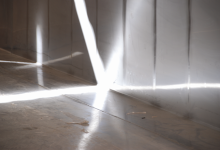- About Stainless
- 3CR12
- Care, Maintenance and Cleaning of Stainless Steel
- Colour Coding Chart
- Facts About Stainless
- Frequently Asked Questions
- World Stainless Association
- Introduction to Stainless Steel
- Life Cycle Costing and Stainless Steel
- LCC Software
- Maintaining Stainless Steel in and Around the House
- Stainless Steel In Architecture
- Preamble for Architects
- Standard A380/A30 M for cleaning and passivation of stainless steel
- Stainless Steel and the Environment
- Stainless Steel Roofing
- Surface Finishes
- Technical Advice & Support
- Technical Enquiries
- Types of Stainless
- Typical Applications
Conditions which favour use of stainless steel
- Corrosive Environment

- Very low (cryogenic) temperatures prevent brittleness
- High temperatures - prevent scale maintain strength
- High strength vs mass
- Hygienic conditions required - easy cleanibility
- Aesthetic appearance - no rust, thus no paint necessary
- No contamination - prevents catalytic reactions
- Discharge slide ability from hoppers
- Wet abrasion resistance
- Non-magnetic properties of austenitic grades
Key considerations in working stainless steels
- KNOW THE MATERIAL. Knowledge improves decision making, avoids problems and saves costs
- KNOW THE GRADE OF MATERIAL. Correct material selection is vital - risk taking is costly
- KNOW THE DESIGN. Good design ensures savings for fabricator and user
- KNOW SURFACE FINISHES. Good finishes perform well, look good and promote sales
- APPLY GOOD HOUSEKEEPING. Good housekeeping saves rectification costs
- APPLY ACCURATE IDENTIFICATION. Lost identity can prove costly
- APPLY PRODUCTION PLANNING. Planning saves costs and promotes quality
- APPLY KNOWLEDGE. Remember that additional information if always available through SASSDA
Other factors
Thermal conductivity
All stainless steels have a much lower conductivity than that of carbon (mild) steel. (Plain chromium grades +- 1/3 and austenitic grades ±1/4) This must be borne in mind for any operation which involves high temperature, e.g. effects during welding (control of heat input) longer times required for heating to attain a uniform temperature for hot working
Expansion coefficient
Plain chromium grades have an expansion coefficient similar to carbon (mild) steels, but that of the austenitic grades is +- 1 1/2 times higher. The combination of high expansion and low thermal conductivity means that precautions must be taken to avoid adverse effects, e.g. during welding use low heat input, dissipate heat by use of copper backing bars and use adequate jigging. This factor must also be considered in components, which use a mixture of materials, e.g. a heat exchanger with a mild steel shell and austenitic grade tubes.
Passive film/passivity
Stainless steels rely on a very thin surface passive film for their corrosion resistance. It is vital to maintain and preserve the integrity of the passive film.
- Avoid mechanical damage and contamination
- Repair any affected areas (e.g. high temperature scale adjacent to a weld, mechanically damaged or ground areas), by passivation only or by both pickling & passivation
- Ensure a constant and sufficient availability of oxygen at the surface of the stainless steel
Gailing/pickup/seizing
Stainless Steels have a tendency to gall, pick-up or seize. To avoid this take precautions such as For surfaces experiencing relative motion minimise the load, ensure no heat build up, keep free of grit or contaminants, use lubricants or surface coatings
On threaded components the threads must have a high degree of surface finish, components should have an intermediate to free fit, avoid over torque and contamination of threads.

